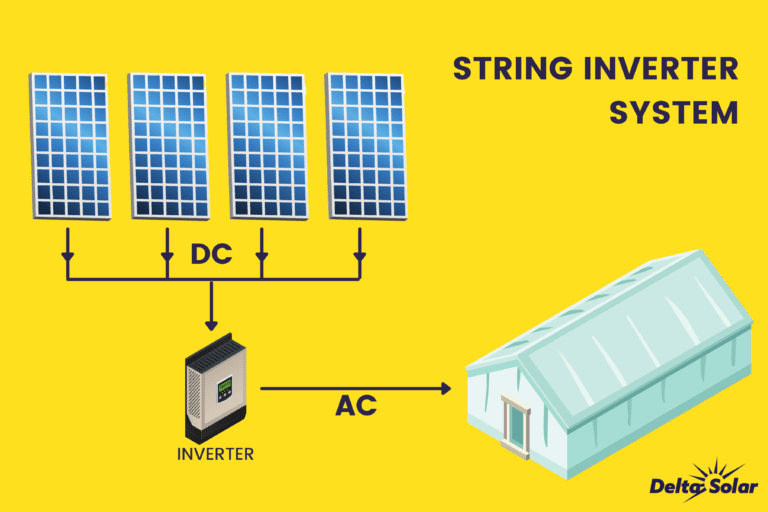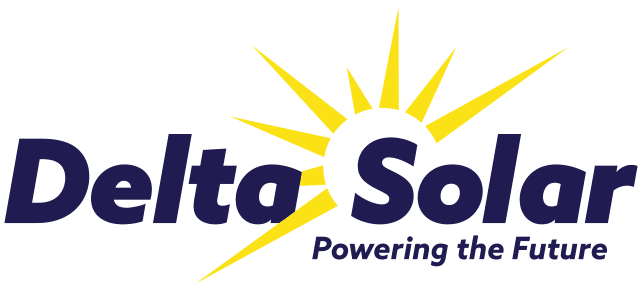String Inverters vs Microinverters
Solar inverters serve a single purpose: they convert the Direct Current (DC) generated by solar panels into Alternating Current (AC), which is the type of electricity used in your business or farm. String inverters and microinverters both perform this function, but in different ways.
If you want to ensure that your solar energy project runs as efficiently as possible, you may want to consider the pros and cons of string inverters versus microinverters.

Understanding the basics of solar inverters
A solar inverter is an electronic device that converts direct current (DC) power from solar panels into alternating current (AC) power. Without solar inverters, the sun’s energy could not be properly transferred to the utility grid, stored in batteries, or used to power a home or business.
What is the difference between string inverters and microinverters?
There are two types of solar panel configurations: string-interconnected panels where one inverter feeds multiple modules in parallel or micro-inverters which use one inverter per module.
A string inverter, also known as a “central inverter”, is a stand-alone box typically installed near your main service panel and electricity meter. Depending on the size of your system size, you could have 1 – 10+ string inverters.
Microinverters work in the same way as string inverters but are installed beneath each solar panel. Each of these microinverters is roughly the size of a router.
The main distinction between microinverters and string inverters is that a microinverter-equipped solar installation will typically have the same number of microinverters as solar panels.
The Pros and Cons of String Inverters
String inverters are more cost-effective than microinverters and are cheaper to install. There are also fewer wires connecting the solar panels to the string inverter. As a result, a string inverter setup is less likely to be improperly cabled than a microinverter system. They’re not only more reliable than microinverters, but they can support many different solar panels which means you don’t need to replace an entire system if one panel goes bad.
Because string inverters require solar panels to be wired in series, if the output of one solar panel is affected, the output of the entire series of solar panels is affected in equal measure. This can be a significant issue if a portion of a solar panel series is shaded for part of the day.
Optimizers can be attached to your solar panels, allowing you to control the output of each panel independently of the rest of the string. A power optimizer differs from a micro-inverter in that it overcomes the limitations of string inverters. If a single panel underperforms due to shade or malfunction, optimizers ensure that the other panels in the string are not impacted.


The Pros and Cons of Microinverters
The main advantage of using microinverters is that you can theoretically produce more solar electricity. The reason for this is that the currents in solar panels differ slightly. When solar panels are connected in a string, the current is reduced to that of the string’s least-producing panel.
Microinverters are the way to go if a solar system is facing multiple directions, such as some panels facing south, some east, and some west. Microinverters are also ideal if you have shading issues due to trees or other structures. In these cases, the solar panels will produce varying amounts of electricity throughout the day, but microinverters will ensure that you harvest all of the energy, whereas a standard inverter will lose some of this production.
The primary disadvantage of microinverters is their high cost. Furthermore, if one of your microinverters fails, not only will it be difficult to determine which one has failed, but servicing and replacing the component is not as simple as installing a new string inverter.


How Do I Choose the Best Inverter For My System?
The constraints of your project will most likely dictate your choice between microinverter and string inverter. Choose a string inverter if your system can be built in full sunlight, or use micro-inverters if your system will be partially shaded. In most cases, a string inverter with power optimizers and the appropriate inverter accessories will be your best bet for striking the right balance of price and efficiency.
For additional information, call (501) 683-8835 to speak with one of our knowledgeable solar energy specialists!
